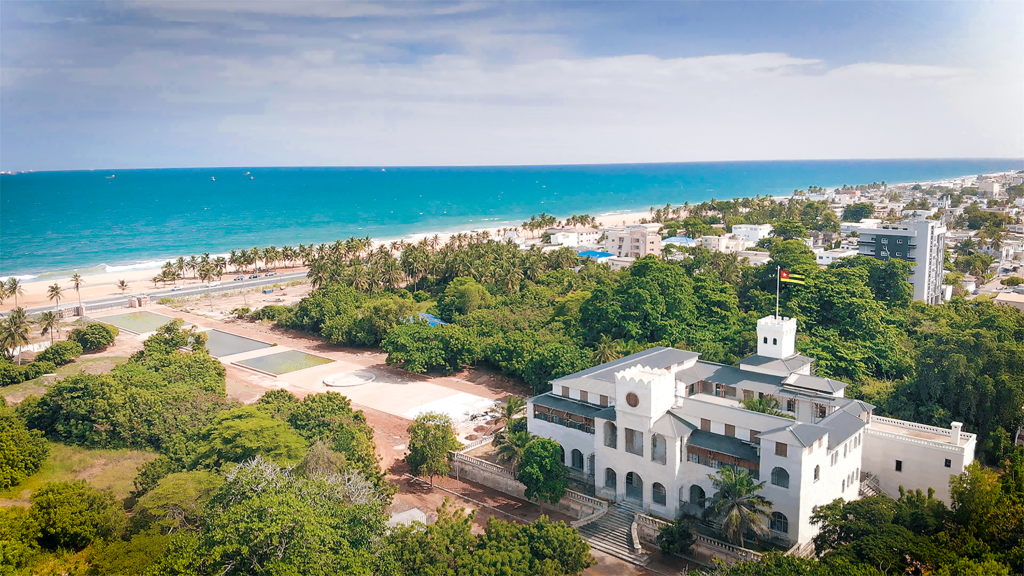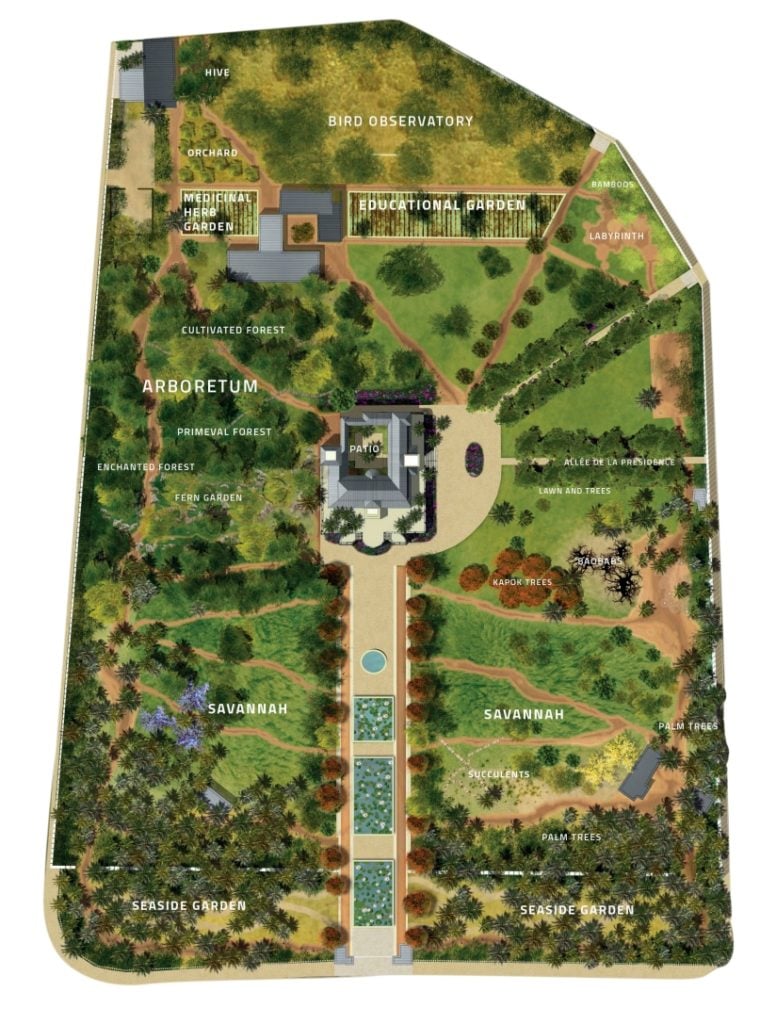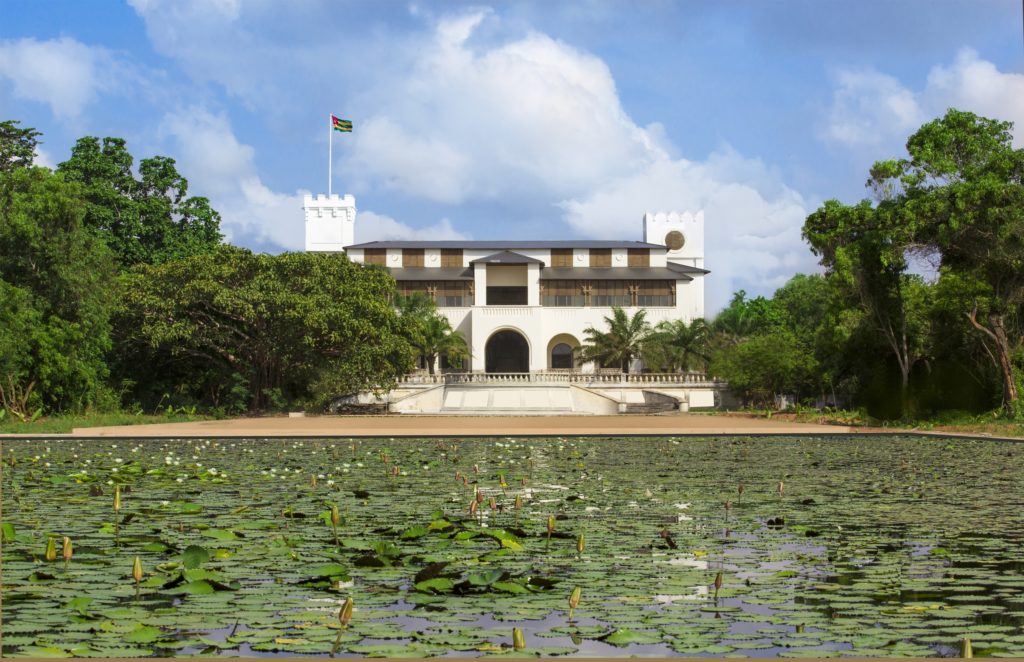Art World
Togo Unveils Plans for a New Museum Inside a Former Colonial-Era Government Headquarters
It will be the first state-funded museum for contemporary art on the continent.

It will be the first state-funded museum for contemporary art on the continent.

The art scene in West Africa has been garnering a lot of attention as of late. There’s ART x Lagos, a contemporary art fair in the Nigerian city that will host its fourth edition in October; Gallery 1957, a contemporary art space in Accra, Ghana, which opened in 2016; and the Museum of Black Civilizations in Dakar, Senegal, inaugurated in December 2018 and lauded for offering the largest representation of the histories of African peoples in the world.
On top of that are a host of pre-existing art initiatives, including the longstanding DAK’Art (or Dakar Biennale), taking place since 1996, and the Bamako Encounters Photography Biennial in Bamako, Mali, in operation since 1994.
Now, the nation of Togo is following suit and opening an institution dedicated to contemporary African art inside the former headquarters of the Togolese government. The museum, called the Palais de Lomé, is housed in a building of the same name, which was once known as the Palace of the Governors. The colonial structure, completed in 1905, previously served as a base for French and German powers. It became the center of Togo’s government in 1970, ten years after it achieved independence.
Abandoned for 22 years, the Palais will now come to life again with newfound purpose: as an artistic and cultural center unique in its focus on African heritage, the environment, and contemporary art. Lomé is currently the only capital in West Africa to have a park in a city center, one that surrounds the Palais de Lomé and which will serve as its sculpture park, punctuated with specially commissioned works by Togolese sculptors Sadikou Oukpedjo and Amouzou Amouzou-Glipka.

Map of the grounds at Palais de Lomé. © 2019 Palais de Lomé.
The Palais’s transformation into an art center was entrusted to Togolese Sonia Lawson, who is overseeing renovation efforts and will be the museum’s director. Lawson previously worked as a consultant for LVMH and L’Oreal in France. Additionally, she was the curator of the Togolese stand at the 2017 edition of Révélations, the biennial for fine art and craft at the Grand Palais in Paris.
“The objective of the project was to transform this patrimonial building, open it to the public, and show an Africa of today,” Lawson says. “The center is here to present the best of Africa not just from Togo and the neighboring countries in West Africa, but art and design from the rest of Africa.”
The nearly 26,000-square-foot Palais de Lomé will house a permanent exhibition space, an art gallery for temporary shows, an area for live performances, a section for photography, a bookstore, and two restaurants. It will open in June with three exhibitions. One of them, “Togo of Kings” (until February 2020), is curated by Togolese writer Kangni Alem, scenographer Franck Houndegla, and actor and director Gaetan Noussouglo. the exhibition includes photography, video, contemporary art, and traditional objects borrowed from owners in Togo.
“The owners are not classical art collectors and these objects are not ‘art’ but actual objects still used today,” Lawson explains. “It is very exceptional that the owners have let us borrow them. It is the first time that traditional Togolese artifacts from various regions are being displayed together in a museum context.” Noussouglo was instrumental in convincing the objects’ owners to lend them for the show, Lawson says.
The second show, “Lomé +,” curated by architect and artist Koffi Sename Agbodjinou, will investigate the city of Lomé as an urban space through past, present, and future interpretations.

The façade of the Palais de Lomé. © 2019 L. Vincent Piment Production.
In a space dedicated entirely to African design, a third exhibition highlights the work of the late Kossi Aguessy. “He died too soon in 2017,” Lawson says. “A very well known designer, he graduated from Central Saint Martin’s in London and was one of the first Africans to be acquired by the Centre Georges Pompidou in Paris and the Museum of Modern Art, but has never been shown in West Africa. We wanted to bring his work home.”
While the museum has come to life thanks also to private investment, the majority of its funding comes from the state—a rarity for the continent. The last three museums that have opened in Africa—Zeitz MOCAA in Cape Town, the Museum of African Contemporary Art Al Maaden (MACAAL) in Marrakech, and even the Museum of Black Civilizations, which was finally constructed after 50 years of discussions thanks to a $34m Chinese investment—were all privately financed.
Still, the Palais de Lomé will need more support. “While the first phase, the building’s renovation, has been backed by the state, we plan to increase the part of the private sector,” Lawson says. “More support will be needed through international funding and sponsorship for the exhibitions, maintenance and operations of the center.”